| From Malibu we headed up the coast a short way to Carpinteria
State Beach, looking for surfers. Instead we found agriculture on a grand
scale. This is a vast field of strawberries grown out in the open, and we
could see a few berries still on them. | 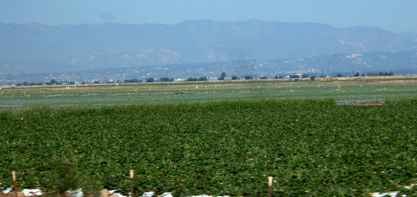 |
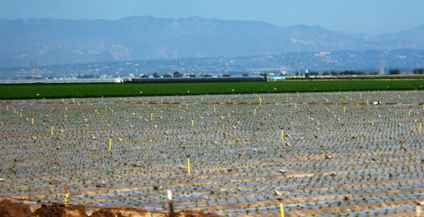 | And this is a newly
planted field of strawberries. And they have fields which cover acres tended
by hundreds of mainly Mexican workers. California could not exist without
them. |
| San Diego is a major naval base and all along the coast are other
naval and marine stations such as this one which housed a number of maritime
reconnaissance planes. | 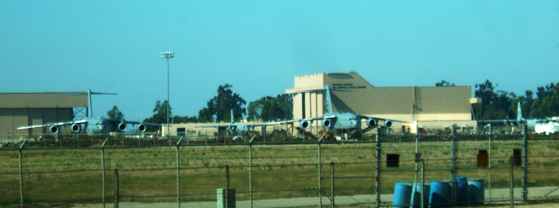 |
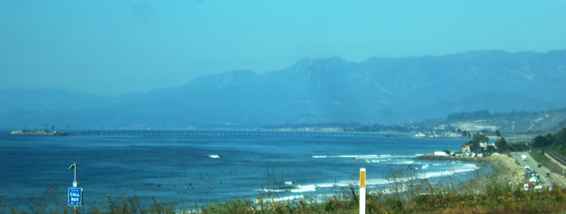 | This is typical of
the view from the road all along this coast. The road follows the
coastline closely because just inland is a ridge of hills, and beyond that,
desert. The constant mist sometimes completely hides the hills. |
| This time the campsite was on the beach, literally. This was our view. We
wondered what they do if they have a storm, because the road is right behind
us on the same level. A tsunami following an earthquake would wipe it all
out. | 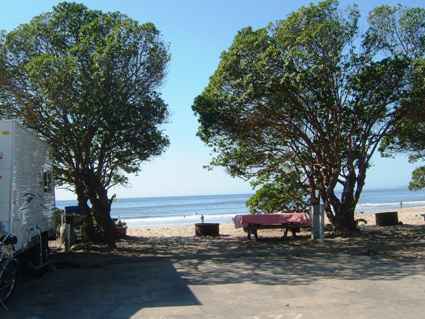 |
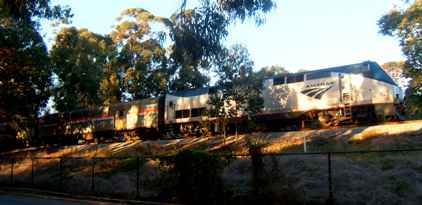 | It would take the
railway line too. This is the rear boundary of the campsite with the Amtrak
LA to San Diego Surfliner service. |
| We did catch a bit of surfing, but it is not quite the season
yet. The dots on the horizon are drilling rigs. | 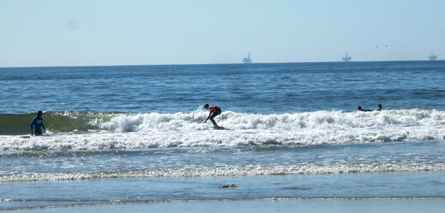 |
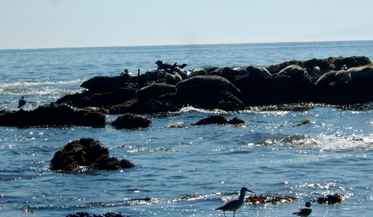 | Here we found the
offshore rocks covered in seals but they were mainly sleeping since it was
low tide. |
| There is a jetty with an oil rig tender at the end. We watched
an articulated truck reverse down the jetty at a fair speed. Skillful! | 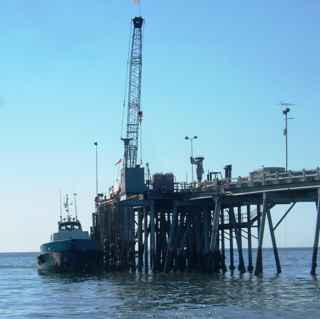 |
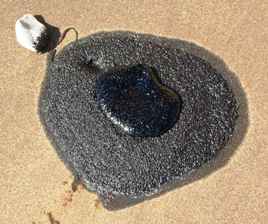 | We had seen odd
'nodding donkeys' all around the area, but on the beach we found tar just
seeping up through the sands and slowly going 'gloop'!. You had to be careful
not to step in them. | 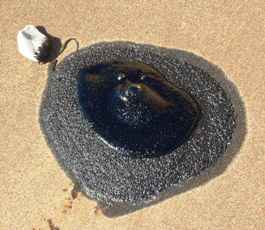 |
| And the rock pools along the beach abounded in starfish and
other marine creatures waiting for the return of the tide. | 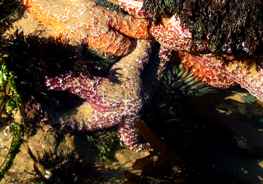 |
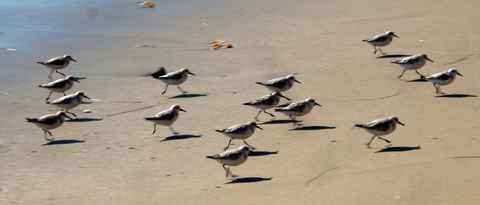 | But the funniest
were these tiny waders who run backwards and forwards across the beach in
schools. Their bodies seemed to glide along, but their little legs moved so
fast that they were just a blur. They rarely flew if they
could run. |
| There were a lot of different waders around including (rather
surprisingly) this heron, which took off as we approached. | 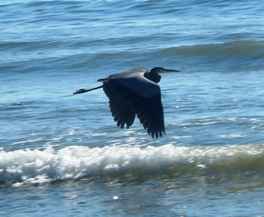 |
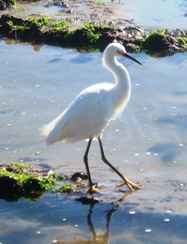 | More common were the
egrets which elegantly stalked the ponds looking for small fish trapped by the
receding waves. All the birds were surprisingly tame, allowing us to get
close enough to take reasonable pictures before they moved away. |
|